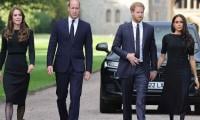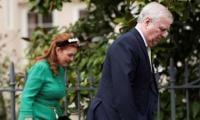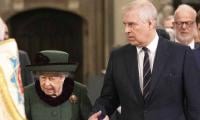High car prices likely to shrink sales volumes in next fiscal
Analysts concur that sales might remain intact during the remaining part of the ongoing fiscal year as car companies have already booked orders
KARACHI: The car sales volume increased by around 50 percent in the first nine months of the financial year 2022, but industry experts see auto volumes coming down in the next fiscal amid increasing car prices and hike in interest rates.
“Auto sales for March 2022 are expected to clock in at 25,800 units which is a growth of 29 percent on both year-on-year and month-on-month basis. Sales during 9MFY22 are set to grow by 50 percent year-on-year to 196,066 units,” said Arif Habib Limited Research Analyst Wasil Zaman.
However, Zaman added that he sees a declining trend in auto sales volume for the remaining part of the year as the impact of increase in taxes and the additional round of price hikes in March 2022 would weigh in.
Meanwhile, Muqeet Naeem, research analyst at Ismail Iqbal Securities said that prices have gone up by up to 36 percent since the price came down last year after the government reduced taxes and duties.
“Looking at the currency devaluation, further price hikes cannot be ruled out. Continuous price hikes coupled with higher interest rates and limitations on auto financing would likely hurt auto demand in the next fiscal year,” he added.
According to a Sherman Securities report, another price hike by the car assemblers could not be ruled out. “A hike in interest rate may affect car leasing eventually reducing demand going forward.”
However, the report added the auto sector has shown resilience in the past and sales may not go down as indicators attached to the sector suggest.
Analysts concur that sales might remain intact during the remaining part of the ongoing fiscal year as car companies have already booked orders.
Naeem said that the highest price jump was witnessed ironically in 1000cc cars, where prices of Cultus, Wagon-R and Picanto have surged in a range of 30-36 percent. It was the segment the government tried to facilitate with higher relaxation on taxes and duties in an effort to provide cheap cars to ‘common man’.
The lowest price increase happened in the Crossover SUV segment such as Sportage and Tucson, where the prices increased in a range of 14-17 percent.
In March, car assemblers increased car prices for the third time post annual budget. The first round of price hike came in November last year, which was on account of rising cost pressures, the second one came in January when the government reversed the tax benefits given in FY 2022 budget, and the last price hike came in March, again on account of cost pressures such as rising raw material prices, freight charges and increasing exchange rates.
All Pakistan Motor Dealers Association (APMDA) Chairman HM Shahzad said that there’s a huge unsatisfied demand for cars in Pakistan and therefore some adverse indicators for the industry sales such as increasing prices and interest rates might not affect the total volumes, which he said has been kept restricted by the industry. It gives industry a cushion to increase car prices at will.
However, industry players said that the entry of new players following Auto Development Policy 2016-21 (ADP 2016-21) jacked up the capacity somewhere above 400,000 cars, while the demand fluctuates around 300,000 cars.
“If there’s more capacity than demand then the delivery period (in some cases) has gone up by over six months?” questioned Shahzad. “Why are people forced to give on-money for early deliveries?”
Shahzad’s association campaigns for reducing restrictions on import of used cars in order to increase choice for consumers and give competition to assemblers.
The government has also recently grilled the auto industry for jacking up car prices and has formed a committee to investigate and see if there have actually been cost pressures to increase car prices proportionally.
-
 81-year-old Florida Woman Arrested After Chilling Murder Plot
81-year-old Florida Woman Arrested After Chilling Murder Plot -
 Cardi B Scores Major Earn Against Offset In Legal Battle
Cardi B Scores Major Earn Against Offset In Legal Battle -
 Bella Hadid Gets Honest About Receiving Support From 'The Beauty' Co-stars
Bella Hadid Gets Honest About Receiving Support From 'The Beauty' Co-stars -
 Nobel Foundation Reaffirms Its Core Responsibility To ‘safeguard The Dignity Of The Nobel Prizes’
Nobel Foundation Reaffirms Its Core Responsibility To ‘safeguard The Dignity Of The Nobel Prizes’ -
 Prince William, Kate Middleton Warned Of Meghan Markle’s UK Return
Prince William, Kate Middleton Warned Of Meghan Markle’s UK Return -
 Melissa Leo Reveals How Winning An Oscar Made Things Worse
Melissa Leo Reveals How Winning An Oscar Made Things Worse -
 Piers Morgan In Hospital: Here's Why
Piers Morgan In Hospital: Here's Why -
 IPhone 18 Pro Leaked: New Design Reveals Radical Corner Camera Layout
IPhone 18 Pro Leaked: New Design Reveals Radical Corner Camera Layout -
 Kung Fu Legend Siu-Lung Leung Passes Away At 77
Kung Fu Legend Siu-Lung Leung Passes Away At 77 -
 Kim Kardashian To Remove Ex Kanye West From Her Kids' Names
Kim Kardashian To Remove Ex Kanye West From Her Kids' Names -
 Queens Mother Arrested After Abducting Child From Court-ordered Visit
Queens Mother Arrested After Abducting Child From Court-ordered Visit -
 Sarah Ferguson Ready To ‘spread Her Wings’ After Separating From ‘disgraced’ Andrew
Sarah Ferguson Ready To ‘spread Her Wings’ After Separating From ‘disgraced’ Andrew -
 Finn Wolfhard Shares How Industry Views Him Post 'Stranger Things'
Finn Wolfhard Shares How Industry Views Him Post 'Stranger Things' -
 Dylan O'Brien Gets Nostalgic After Reunion With Old Friend
Dylan O'Brien Gets Nostalgic After Reunion With Old Friend -
 UK Doctors Warn Screen Time Is Harming Children’s Health
UK Doctors Warn Screen Time Is Harming Children’s Health -
 Meghan Markle To Get Police Protection In UK If Travelling With Archie, Lilibet
Meghan Markle To Get Police Protection In UK If Travelling With Archie, Lilibet



